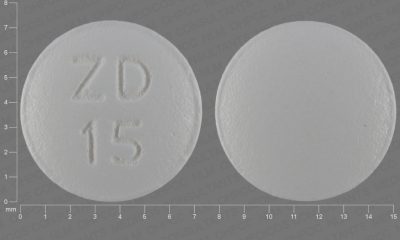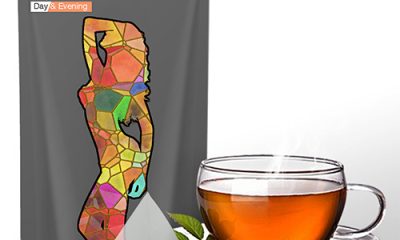Health
5 Benefits of macrobiotic diet and side effects
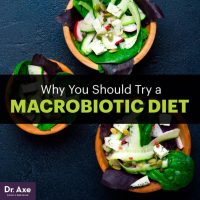
Discover the 5 shocking health benefits of a macrobiotic diet and side effects.
The meaning of the macrobiotic diet is “great life.” As stated by the Kushi Institute – one of the world’s leading authorities on the macrobiotic diet
«This is not simply a diet, macrobiotics recognizes the profound effects that food, the environment, activities and attitudes have on our body- mind-emotions ».
The core concepts of the macrobiotic diet, including the Traditional Chinese Medicine belief that it balances yin and yang in both the body and the environment, date back many centuries in ancient Eastern traditions.
Proponents of macrobiotic eating approaches have long encouraged people to eat natural, whole foods that not only support the health of their bodies, but also the ecosystem and natural order of life.
As a “countercultural” approach to eating, macrobiotic diets became fashionable in the United States during the 1960s because they encouraged living in harmony, practicing a positive mindset, and viewing food as much more than just calories or fuel. .
Although each person reacts differently to different dietary approaches, evidence shows that macrobiotic-style diets can help improve heart health, reduce inflammation, and support a healthy body weight well into old age.
What is the macrobiotic diet
The macrobiotic diet is a plant-based diet rooted in yin-yang theory that comes from Asia.
According to macrobiotic theory, the balance between yin and yang is achieved through a mainly vegetarian diet, low in fat, with a balance of different macronutrients (proteins, carbohydrates and fats), foods that have different energy qualities and a wide range of vitamins and minerals from plants.
This approach to eating is believed to better support agriculture, local farming, digestion, and even mental well-being.
Other recommendations for eating a macrobiotic include buying locally grown produce, buying organic foods that are not treated with chemical pesticides, consuming foods in season, consuming mostly fresh and raw foods, and an emphasis on organic foods. plant foods over meat, dairy and other animal products.
Most macrobiotic diets emphasize the consumption of a wide variety of plant foods, which means that these diets tend to be relatively high in carbohydrates.
However, because refined sugar and processed/ packaged foods are not part of the macrobiotic plan, these carbohydrates are “complex,” great sources of dietary fiber, and packed with antioxidants and other nutrients.
Although there are many different varieties of macrobiotic diets that are consumed around the world, most have roughly the following breakdown:
• More than 50 percent of calories come from complex carbohydrates (sometimes even up to 80 percent), 15 to 30 percent from healthy fats, and 10 to 20 percent from protein.
Although carbohydrates are consumed in large quantities, refined carbohydrates such as processed grains and sugar are avoided.
• A high proportion of the carbohydrates in macrobiotic diets (about 25 to 30 percent of total calories) comes from fresh or cooked vegetables.
This is a very high percentage considering how low in calories vegetables naturally are.
• Complex carbohydrates, such as brown rice, barley, millet, oats, and organic (non-GMO) corn are also commonly consumed, accounting for 30 to 40 percent of total calories.
• Many also get 5 to 10 percent of their calories from legumes or beans, often the fermented types like tempeh, miso, or tofu.
• Sea vegetables are a staple in most macrobiotic diets, accounting for 5 to 10 percent of total calories.
• A small percentage, about 5 percent of calories, tend to come from fish or shellfish (usually eaten several
times a week on average).You may notice that macrobiotic diets have a lot in common with the famous Okinawan Diet, which is not surprising considering that both have similar roots in Asian cultures.
The Okinawan Diet is named after the largest island of the Ryukyu Islands in Japan and is consumed by some of the healthiest and longest-lived people in the world.
In fact, Okinawa has been coined as one of the Blue Zones of the world, where people have the highest chance of living in the last 100 years.
The average life expectancy in the United States is 78.8 years, but it is between 80-87 years in Japan (higher for women than for
5 benefits of a macrobiotic diet
Below are the 5 benefits of a macrobiotic diet for health:
1.- Benefits of macrobiotic diet for inflammation
• In 2015, the University of Memphis School of Public Health published the findings of a study investigating the anti-inflammatory and anti-cancer potential of macrobiotic diets.
The study compared the nutrient composition of a macrobiotic diet plan with the National Dietary Recommendations (CDR) based on the National Health and Nutrition Examination Survey (NHANES).
• A key comparison was evaluating which approach scored high on the Dietary Inflammatory Index (DII), as well as comparing levels of total calories, macronutrients, and 28 micronutrients.
• The results showed that the macrobiotic diet plan had a lower percentage of energy from fat, a higher intake of dietary fiber, and higher amounts of most micronutrients.
Nutrients in the macrobiotic diet often met or exceeded the RDA recommendations, with the exception of vitamin D, vitamin B12, and calcium.
• Based on DII scores, the macrobiotic diet was found to be “more anti-inflammatory compared to NHANES data,” and the researchers concluded that the overall findings indicated potential for disease prevention when a macrobiotic eating approach was followed.
2.- Benefits of macrobiotic diet for heart
• Certain studies have found evidence of macrobiotic-style diets that support cardiovascular health, particularly lowering serum lipid levels and lowering blood pressure levels.
This is not surprising considering how many high antioxidant anti-inflammatory foods are encouraged in a macrobiotic diet.
For example, the macrobiotic diet is rich in dietary fiber, including all kinds of fiber-rich foods, such as raw vegetables, beans, and ancient grains.
• Eating plenty of fiber has been correlated with improvements in cardiovascular disease risk factors through multiple mechanisms, including lowering lipids, regulating body weight, improving glucose metabolism, controlling blood pressure, and blood pressure. reduction of chronic inflammation.
3.- It can help maintain a healthy weight
• Like those who eat the Okinawan way, proponents of the macrobiotic diet focus not only on eating the right foods, but also eating them in the correct amounts.
• The macrobiotic diet emphasizes eating carefully, slowing down and savoring meals, paying attention to physical sensations (also called biofeedback), and chewing food thoroughly.
• This approach can help you better control how much you eat, give you more pleasure from having less, teach you to avoid emotional eating out of boredom or other negative feelings, and achieve satiety more easily.
• Rather than trying to lose weight simply by cutting out too much food or consuming less, which can lead you to feel overly hungry and deprived, eating mindfully and choosing foods wisely can help you feel more in touch with your body’s needs.
4.- Very Low in Sugar, Gluten and Packaged Foods
• Like other whole-food-based diets that eliminate junk foods, packaged goods, bottled drinks, fried foods, and fast foods, the macrobiotic diet is very low in sugar, empty calories, and artificial ingredients.
• This makes for a very nutrient-dense diet, high in things like vitamin C, vitamin E, and fiber, but generally low in calories.
• It can also be potentially beneficial for food allergy sufferers as it removes common allergens that can cause indigestion, such as dairy products, almost all gluten, and acorns.
• However, a drawback and point of criticism is that macrobiotic diets tend to include a lot of salty and high-sodium foods, mainly from things like soy sauce, fermented soy products, and sea vegetables.
5.- Benefits of macrobiotic diet for cancer
• Although diet is only one piece of the total puzzle when it comes to preventing cancer, and results vary from person to person, research suggests that consuming a macrobiotic diet may help reduce cancer risk in part by providing high levels of antioxidants and phytoestrogens.
• A 2011 report published in the Journal of Nutrition stated, “Based on the available evidence and its similarity to dietary recommendations for chronic disease prevention, the macrobiotic diet probably carries a reduced risk of cancer.”
• Women who consume macrobiotic diets tend to have modestly lower circulating estrogen levels, which has been linked to a lower risk of breast cancer.
• Macrobiotic diets provide high amounts of phytoestrogens from foods like fermented soy products and sesame seeds , and these can help regulate natural estrogen production by binding to estrogen receptor sites.
• While too much estrogen comes with its own risks, for women over 50 who naturally experience decreased levels during menopause, the extra estrogen from their diets could help lower their risk of cancer, among other benefits.
How to Consume Macrobiotic Diet
Foods that are considered macrobiotics include:
• All types of fresh vegetables other than night shade, especially daikon radishes, cooked or fresh leafy greens such as bok choy, cabbage, mushrooms, chives, leeks, broccoli, carrots, beets, various varieties of squash, watercress, and cauliflower.
• Fresh herbs, including ginger, garlic, coriander, etc., plus soy sauce, tamari, fish sauce, brown rice syrup, and honey for sweetening or flavoring.
• Algae and seaweed
• Beans and legumes, tofu, tempeh, adzuki beans, black beans, and edamame
• Nuts and seeds, including sesame, pumpkin, almonds, and cashews
• Raw old grains – this includes all types of rice (especially brown rice), millet, barley, buckwheat, amaranth, quinoa, rye, oats, and organically grown corn.
• Noodles made from brown rice, soba, and other grains
• Miso or fermented soy seasonings (and miso soup)
• Unrefined oils made from things like sesame or pumpkin seeds
• Tea, such as green, black, jasmine, white, long oo, bancha, dandelion, grass, etc.
Foods to avoid on a macrobiotic diet:
• Packaged and processed foods
• Dairy products
• Meat
• Eggs
• Refined sugar and sweeteners
• Chocolate or cocoa products
• Most fruits, especially tropical ones
• Coffee
• Strong or hot spices
•Night-shade vegetables: This includes avoiding dark-colored vegetables, such as eggplants, tomatoes, potatoes, and bell peppers. How is that, you may be wondering?
Although belladillas are not a problem for a high percentage of people, some experience digestive symptoms when consuming these foods, including allergies, symptoms of intestinal leakage and autoimmune reactions.
However, eliminating these vegetables in general is a common criticism of the macrobiotic diet as many feel this is not necessary for most healthy people.
Macrobiotic diet plan and lifestyle tips
• Cook fresh food at home more often, especially on a gas stove, which reduces the amount of leftovers and microwave, frozen, or canned food you eat.
• Make plants the center of your meals by only consuming fresh and wild seafood (and especially meat or dairy) in limited quantities.
• Try to eat a variety of colored fruits and vegetables every day, as different colors indicate different antioxidants.
• Drink plenty of clean water and tea, avoiding sweetened beverages, alcohol, and caffeine.
• Try to chew your food well to improve digestion and also slow down during meals. The ideal is to chew up to 25-50 times according to the macrobiotic diet theory.
• Use glass to store food and water instead of plastic products.
• The Great Life Global organization also recommends other macrobiotic lifestyle tips to improve balance, such as opening windows every day for fresh air, keeping plants indoors, walking outside, sticking to a regular sleep schedule.
And wakefulness, practicing gratitude daily, learning to cook at home more often, wearing clothing made from natural fibers, exfoliating with hot towels, or brushing your skin to detoxify and chew your food thoroughly while eating.
Recipes for a macrobiotic diet
•For breakfast: a green smoothie, brown rice porridge with nuts and seeds, or a tasty and traditional breakfast of miso soup, vegetables and legumes.
•For lunch: miso soup with seaweed, a small amount of wild fish, sautéed vegetables, and a serving of unprocessed grains, such as brown rice. The tea can also be consumed throughout the day.
•For dinner: Similar to lunch, such as soup with soba noodles and vegetables, fermented beans or tempeh for protein with seaweed salad, or a stir fry made with vegetables, grains, nuts and seeds.
Macrobiotic diet vs. Paleo diet
• The Paleo diet is modeled after what our ancestors are believed to have eaten thousands of years ago – that is, only natural foods that could have been found within their local environments.
• Because both the macrobiotic diet and the paleo diet emphasize the consumption of organic, unprocessed, local and seasonal foods, the two diets have some underlying principles in common – however, certain foods also differ between the two approaches.
• One of the biggest differences between macrobiotic diets and paleo diets is that macrobiotic diets are plant-based, sometimes even completely vegetarian / vegan.
People who eat a macrobiotic diet get their protein from plant-based foods like tofu, legumes, beans, whole grains, nuts, seeds, and occasionally some shellfish.
• The paleo diet tends to include more animal protein, including meat, fish, eggs, and poultry.
However, both approaches avoid dairy products and all processed vegetarian proteins (such as soy isolate or synthetic protein powders).
• The paleo diet also eliminates all beans, legumes, and grains for the most part, while the macrobiotic diet encourages these foods.
However, both diets reduce or eliminate added sugar, synthetic additives, artificial ingredients, refined oils, fried foods, and sometimes common allergens like belladonna greens and gluten.
Side effects of macrobiotic diet
Although the macrobiotic diet is considered one of the most popular alternative or complementary dietary approaches for the treatment of chronic diseases, including cancer, few studies have been able to really demonstrate its effectiveness in preventing or treating disease.
Therefore, more research is still needed before drawing conclusions about the healing benefits of this diet.
According to some experts, there are concerns regarding treating cancer with dietary approaches, such as macrobiotics, including:
• Patients who potentially delay conventional treatments and doctor visits
• Possibly developing nutritional deficiencies that impair immune function, such as consuming too little vitamin D, calcium, and protein
• Eating too few calories overall, which can cause muscle loss and fatigue – this can be made worse by low levels of iron and vitamin B.
• Some also find that macrobiotic diets have social limitations (due to strict adherence to this diet) that make them difficult to follow.
Additionally, macrobiotic ingredients can be difficult to obtain, and the salt intake in this diet plan is considered too high by some.
There is also disagreement on the need to eliminate most fruits, including all tropical fruits.
These are all valid arguments and should be weighed against your personal preferences, beliefs, and your overall health.
If you have an existing condition, such as heart disease or cancer, or if you take medication, it is a good idea to get a professional opinion if you start a new way of eating and experience any negative signs or symptoms.
Final thoughts
• A macrobiotic diet is a dietary approach that comes from Asian traditions that emphasize the consumption of mainly vegetable (vegetarian) proteins, low amounts of animal foods and fats, and a balance of different micro and macronutrients that support the energy balance of yin -yang in the body.
• Macrobiotics argue that foods that have different energy qualities and a primarily plant-based diet are good for health (especially the digestive system) and also good for the ecosystem.
• An emphasis on local, seasonal and fresh plant-based foods is believed to support agriculture, local farming, and mental well-being. It could also support heart health, promote longevity, and offer protection against cancer.
• Important practices when consuming macrobiotic foods include buying locally grown organic products, cooking often at home, avoiding packaged foods, eating fermented and raw foods, and limiting dairy and animal products.
• Although a macrobiotic diet has been shown to have anti-inflammatory effects, some concerns are that macrobiotic diets are high in salt but relatively low in protein, fruit antioxidants, vitamin D, calcium, and sometimes B vitamins.
We hope the article on the 5 benefits of a macrobiotic diet for health has been of help.
Health
7 shocking health benefits of maqui
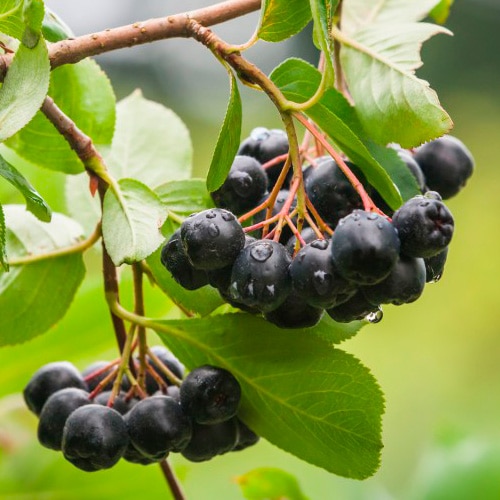
Table of Contents
Health
3 Benefits of salt water and side effects
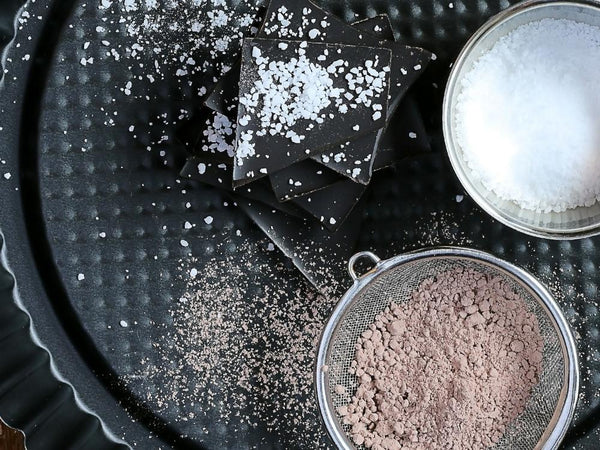
Discover the 3 shocking health benefits of salt water and side effects.
Sometimes the best remedies in life are the simplest. This is true of an ancient skincare hack known for tightening pores, balancing oil production, and rejuvenating skin.
You won’t need fancy skin creams packed with chemicals and preservatives to achieve a youthful glow after this.
You can start to improve the quality of your skin with just two things: purified water and high-quality salt, and you will see how the benefits of saltwater will work miracles for you.
Health Benefits of saltwater
Since saltwater therapy has been used for centuries throughout the world, including ancient Greece, there is strong anecdotal evidence that it works wonders on the skin.
A handful of studies have found the saltwater bath to be particularly effective for troublesome skin conditions, such as psoriasis.
Saltwater is said to benefit your skin in the following eleven ways:
• Closes open pores
• Absorbs excess oil
• Balances oil production
• Kills acne-causing bacteria
• Diminish scars
• Heals scratches and cuts
• Exfoliates dead skin cells
• Restores the natural pH of the skin
• Improves the barrier function of the skin
• Improves hydration
• Reduces inflammation
1.- Benefits of salt water for acne
If you are lucky enough to live near the ocean, you may already know this beauty secret.
But if you don’t live on the coast, just fan warm salt water the next time you have an outbreak.
Try mixing a cup of purified water with a tablespoon of sea salt.
Use a cotton ball to gently apply saltwater to acne and allow it to dry.
By the way, if you try this treatment and your acne still isn’t clearing up within a day or two, maybe your diet is to blame.
Make sure to avoid sugar, processed junk, gluten, peanuts, yeast, and dairy for a while to see if your skin clears up.
Eat plenty of green leafy vegetables, lean protein sources, and healthy fats like coconut oil and avocados; your skin and waist will thank you.
2.- Benefits of salt water for scratches
If you’ve ever heard the expression “throwing salt on a wound,” you probably aren’t very interested in putting salt water near your scratches.
However, this treatment can be beneficial in killing harmful bacteria and speeding up the healing process.
Research shows that bathing in magnesium-rich Dead Sea salt improves the skin’s barrier function, improves skin hydration, and reduces skin inflammation, which are all the things you’ll need if you have a cut or scratch.
Fill your bathtub with warm water and pour in a cup of sea salt.
Take the experience to the next level by adding 10 drops of lavender essential oil.
The scent will promote a deep sense of relaxation – you may even feel like you are in a spa!
3.- Drink salt water to heal from the inside out
The good thing about salt water is that there are many ways to use it. A glass of warm salt water, called “Sole,” is a great way to start your day and promote internal healing.
As long as you use a natural form of salt (and avoid drinking seawater), it will promote hydration, facilitate digestion, reduce inflammation, improve your sleep, detoxify your cells, improve your bone health, and more.
What does salt do to the body
We rarely think about what goes into nature’s most common treasures, like salt.
This natural mineral comes directly from the earth, formed into crystals from a combination of sodium and chloride.
It is found naturally in seawater, making up at least three percent of our world’s oceans. And when seawater is trapped, the water evaporates and leaves salt crystals.
Despite what you may have heard about sodium and your health, a natural source of salt contains vital nutrients that are important for maintaining optimal well-being.
First, salt provides key minerals like sulfur, calcium, sodium, magnesium, silicon, boron, potassium, bromine, and strontium.
With its rich mineral content, salt can help you lose weight, reduce asthma symptoms, improve blood sugar levels, and regulate heart health.
However, keep in mind that not all salts are created equal. Table salt, for example, is highly processed and bleached before it reaches that little glass bottle.
Unfortunately, during mass production, manufacturers strip you of everything good for your health.
The result is a product that does not resemble its original form and can even harm your health. When doctors warn against consuming too much salt, table salt is what they mean.
For your skincare routine and general health, try using these unprocessed varieties:
Sea salt for skin
Natural sea salt contains the many minerals our bodies need, such as magnesium, calcium, sodium, and potassium.
All of these play a role in the health of our skin, allowing cells to communicate with each other and heal problems that arise.
When you don’t have enough minerals, you will see annoying symptoms like dry skin, dullness, irritation, and blemishes.
Fortunately, sea salt can naturally enhance hydration and strengthen the outer layer of your skin to keep it looking healthy.
Himalayan pink salt for skin
Despite the name, there are no salt mines in the Himalayas. The pink salt slabs come from the Khewra Salt Mine in Pakistan, about 300 miles west of the Himalayas.
As the second-largest salt mine in the world, people have been collecting this commodity for more than 2,000 years.
Only in the last decade has it become popular in Western culture. Salt is made up of 95 percent sodium chloride.
The rest is a mixture of polyhalite and other minerals, which give the salt its characteristic pinkish hue.
Due to the lack of processing, it still contains the beneficial minerals that your skin will love.
As you can see, saltwater provide a series of skincare benefits, so if you want to show off shiny and well-groomed skin, do not hesitate to follow each of the tips in this publication step by step.
Health
12 Benefits of Jamaica flower and side effects
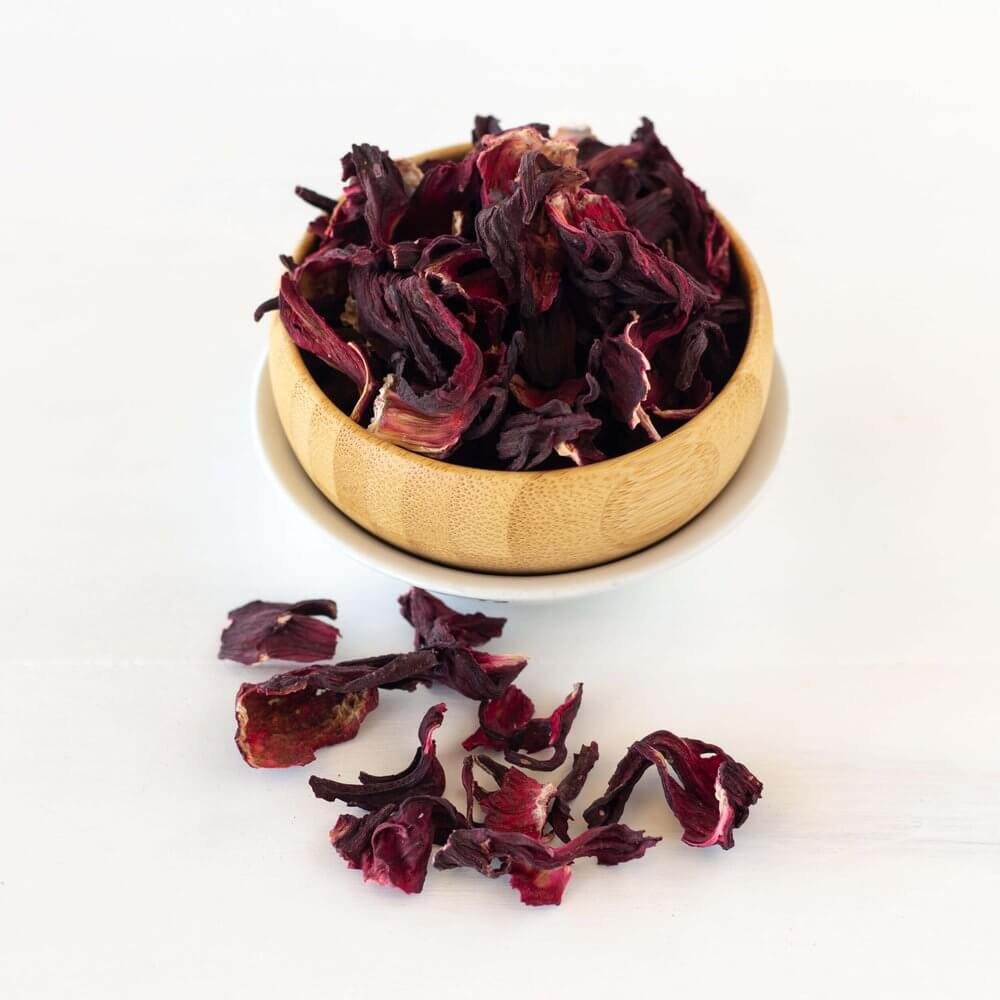
Table of Contents
-

 Food1 year ago
Food1 year ago10 + Benefits of carrot juice and side effects
-

 Benefits4 months ago
Benefits4 months agoThe Benefits of Joining Gym Lumolog – Improve Your Fitness & Health
-

 Health1 year ago
Health1 year ago50 Super Healthy (And Very Often Cheap) Foods
-

 Health1 year ago
Health1 year ago5 Shocking health benefits of kinkeliba and side effects
-

 Food1 year ago
Food1 year ago8 shocking benefits of leek juice and side effects
-

 Health1 year ago
Health1 year agoBenefits of guava leaves Sensually
-

 Weight Loss1 year ago
Weight Loss1 year agoChaz Bono weight loss secret
-

 Health1 year ago
Health1 year ago15 Benefits of lipton tea and side effects





